If mortality improvement is a three-legged stool, improved treatment of disease is only one leg; the other two legs are prevention and early detection.
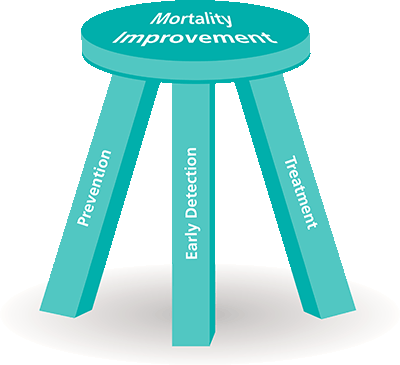 When considering medical innovation and health trends, most people think about new blockbuster pharmaceuticals or cutting edge surgical procedures. After all, we’ve seen numerous historical examples of therapeutics improving population mortality.
When considering medical innovation and health trends, most people think about new blockbuster pharmaceuticals or cutting edge surgical procedures. After all, we’ve seen numerous historical examples of therapeutics improving population mortality.
The introduction of penicillin in World War II is credited with saving many lives. The anti-retroviral drugs developed to combat infection with Human Immunodeficiency Virus (HIV) is a recent example of impressive treatment breakthroughs. Through treatment, we have moved a disorder where survival was measured in months to a chronic condition with good long-term survival.
Society has also benefited from surgical advances that have saved lives and improved mortality. Examples include repair of congenital heart defects, replacement of dysfunctional heart valves and organ transplants.
But, we need to think more broadly when considering medical innovation and mortality. Mortality improvement is a three-legged stool, and improved treatment of disease is only one of the legs. The other two legs, often overlooked, are disease prevention and
early detection.
As science uncovers the root cause of a disease, efforts can be undertaken to prevent a disease from occurring. If these efforts fail, early detection may mitigate the complications from the disease, or in some cases prevent evolution into a more serious illness. A good example can be seen with Human Papilloma Virus (HPV) infection and cervical cancer.
Prevention
In the case of HPV, early detection preceded prevention. Dr. George Papanicolau developed the Pap smear in 1928, using the examination of cells from the cervix as an early detection system for cervical and uterine cancer. The procedure did not become widely recognized until the 1940s.
As a result of improved early detection there has been a dramatic decrease in the risk of dying from cervical cancer (up to 75%) over the past 50 years. Once it was recognized that the causative agent for cervical cancer is oncogenic HPV, a vaccine was developed for use as a preventative measure.
Other examples of preventing disease include…
- Use of sunblock or restricting the young from tanning bed use to prevent melanoma
- Vaccines for hepatitis B to prevent later cirrhosis and hepatoma from chronic hepatitis B infection.
- Low-dose aspirin for some adults for prevention of cardiovascular disease (CVD) and colorectal cancer
- Lowered blood pressure targets for diagnosing and treating high blood pressure as outlined recently by the American College of Cardiology and the American Heart Association.
Detection
On the detection front, computed tomography for coronary calcium is recommended for adults at intermediate risk for cardiovascular disease and may be reasonable for those at low to intermediate risk. Studies have shown that elevated calcium scores have resulted in 3-fold or higher increase in the use of statin and aspirin in the subsequent years, which is the result needed to delay the disease and lessen severity.
Of course, it has been recognized that finding cancer early, when localized, has given patients the best chance of survival. And so, the early detection of cancer has been a priority for years. Mammography, screening colonoscopy, fecal occult blood testing, and prostate specific antigen are all examples of tests to find cancer at an early stage when removal and cure are more likely.
Lung Cancer is the number one cancer killer in the US. The reductions in smoking have made great strides in reducing lung cancer deaths, but more can be done (Figure 1). Overall, lung cancer has a poor prognosis, but when caught early and removed surgically five-year survivals range from 71-90%.
Figure 1 - Trends in US Population Deaths due to Cancer and by Organ for Origin
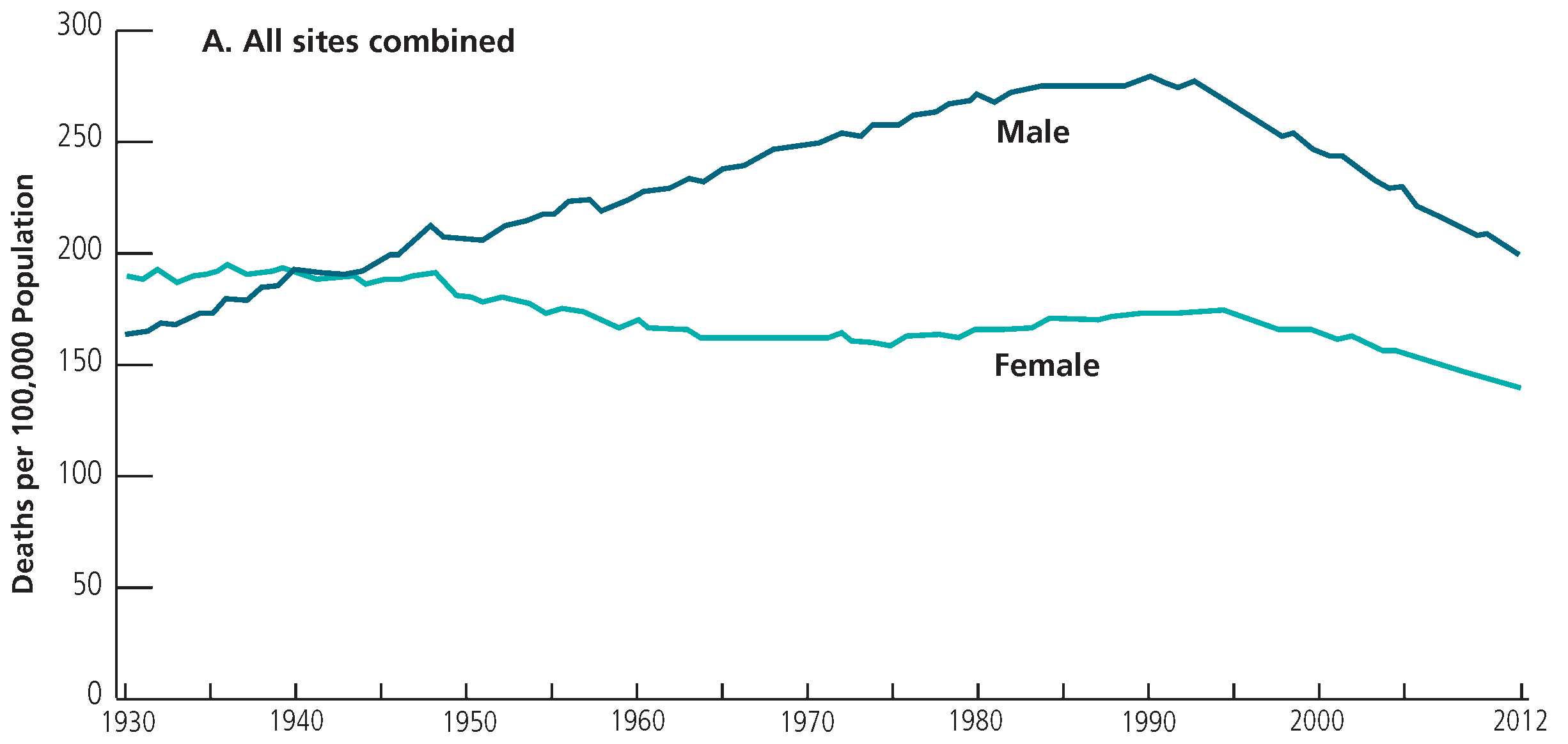
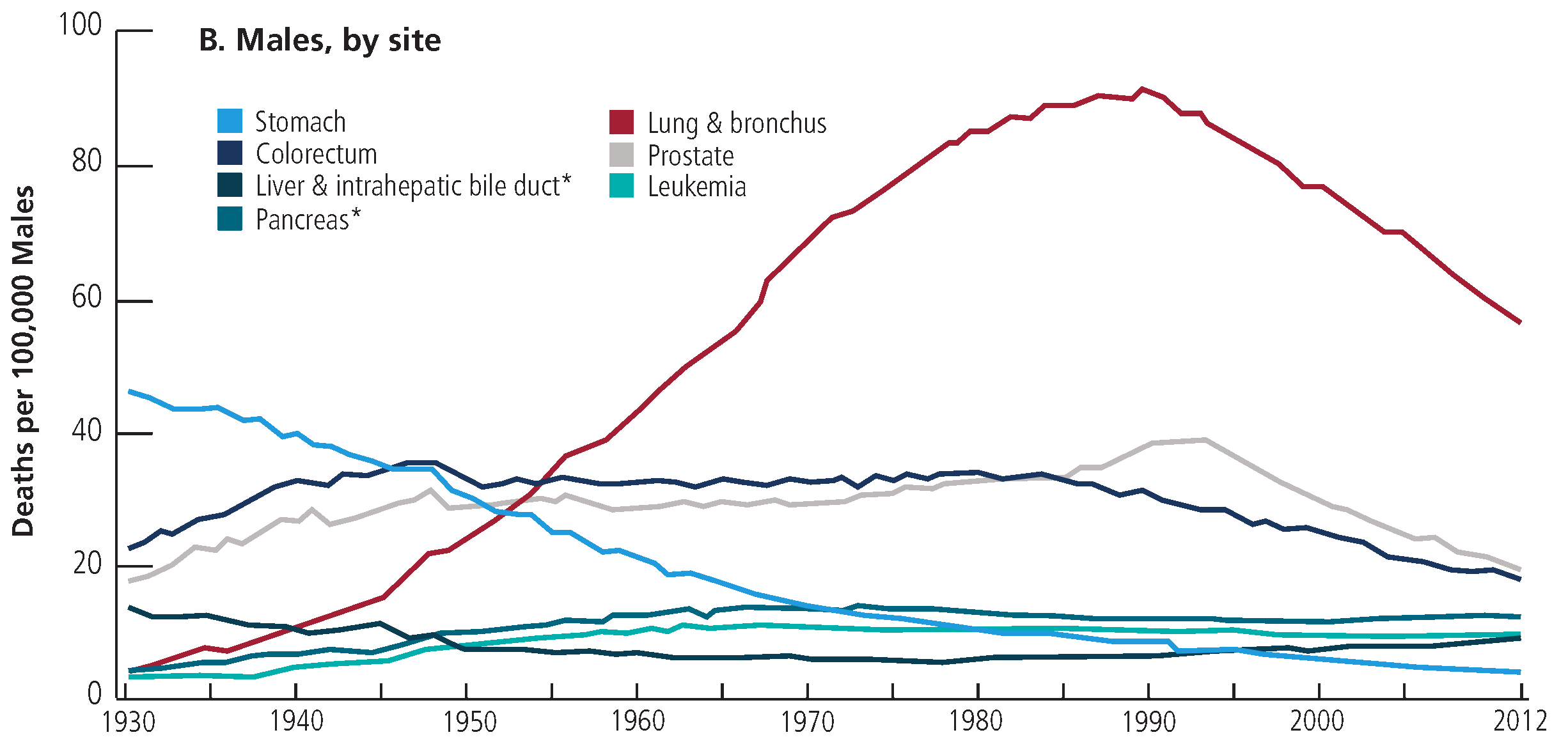
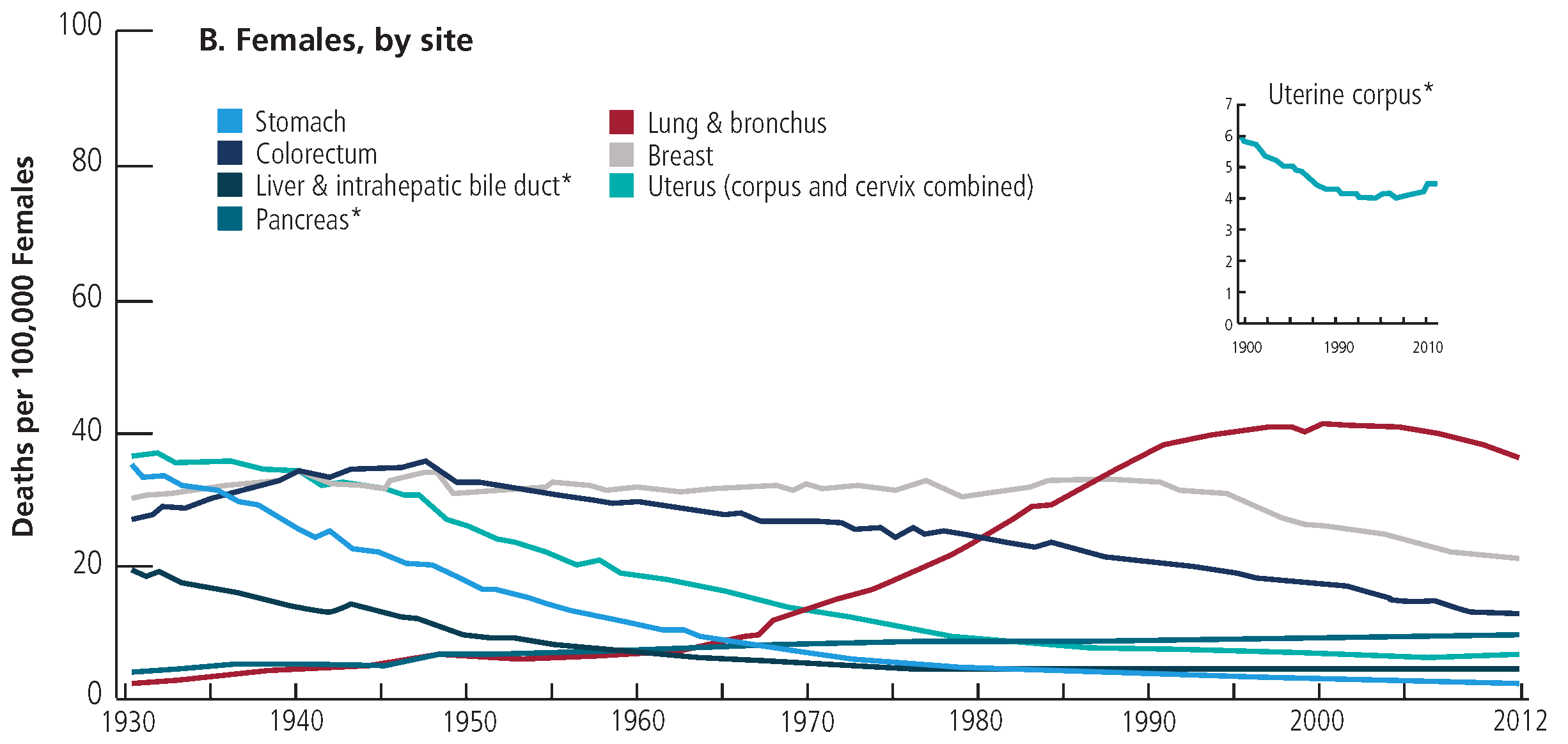
CA: A Cancer Journal for Clinicians, Vol 66 Iss 1, pp7-30. 7 Jan 2016 DOI: 10.3322/caac 21332
Strides are being made in the treatment of advanced lung cancer, and especially immunotherapy has shown promising results. But, it is likely that early detection will play a large part in future improvements in lung cancer mortality.
New areas of emphasis
Disease prevention also may be getting a boost from a consumer driven focus on healthy behaviour and choices. The phrase “Health is the new wealth” is entering our vocabulary. As noted in a recent global consumer study by ReMark, “Health has become the contemporary asset worth protecting.”
Some insurers are acting on the value – even status – that a growing number of consumers place on fitness and well-being. They are developing life insurance products with living benefits (gym memberships, etc.) that reward healthy activities. This is an exciting trend, and our industry has huge incentive to get behind it.
Efforts involving Electronic Health Records also hold promise for prevention and early detection of disease. For example, screening guidelines can be programmed in to remind physicians which procedures are needed in their individual patients. These important reminders should result in improved outcomes and better population mortality.
In summary, by all means, pay attention to advances in medical therapeutics when considering mortality trends. But, also pay attention to efforts at prevention and early detection, as those might just be the biggest contributors to improved mortality.
Health Is the new wealth
ReMark, a SCOR affiliate, conducts consumer research for the life insurance industry. Its last two global consumer studies1 find evidence that consumers would be interested in wellness programs offered as part of a life insurance policy. Additionally, their partnership with e-health platform Umanlife demonstrates the potential for health-based engagement to foster sustainable behavioral change among customers – and transform the insurer-customer relationship. ReMark’s data scientists found a notable influence on weight, cholesterol level, blood pressure and activity levels (figure below) among individuals using devices connected to the Umanlife platform.
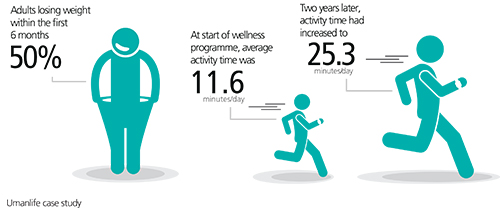
1You Can't Always Get What You Want (2016) & Life is a Rollercoaster (2017)

